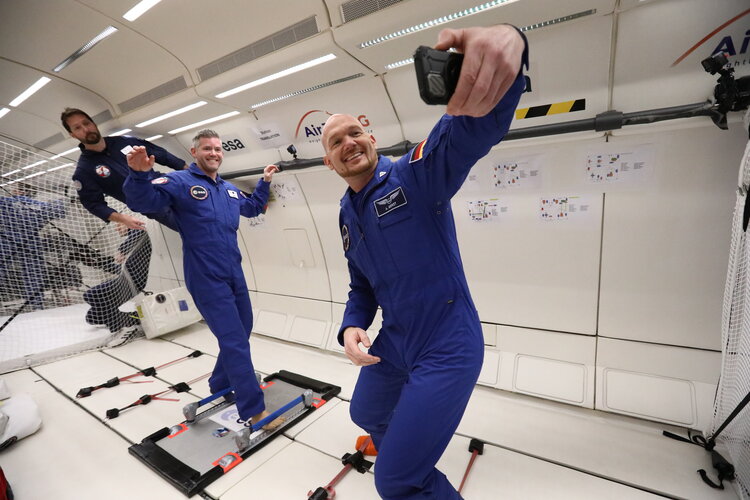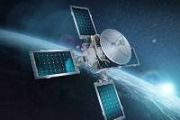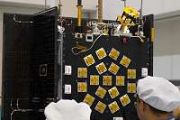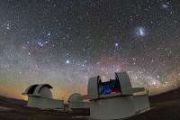
Copernical Team
Rocket Lab launches fifth StriX satellite for Synspective
 Rocket Lab has launched its 51st Electron rocket, deploying a single satellite into low Earth orbit for Synspective, a Japanese Earth-imaging company.
The mission, named "Owl For One, One For Owl" in reference to Synspective's StriX satellites, which are named after the genus of owls, lifted off at 04:39 a.m., August 3rd NZT (16:39 UTC, August 2nd) from Launch Complex 1, Rocket Lab's priva
Rocket Lab has launched its 51st Electron rocket, deploying a single satellite into low Earth orbit for Synspective, a Japanese Earth-imaging company.
The mission, named "Owl For One, One For Owl" in reference to Synspective's StriX satellites, which are named after the genus of owls, lifted off at 04:39 a.m., August 3rd NZT (16:39 UTC, August 2nd) from Launch Complex 1, Rocket Lab's priva Week in images: 29 July - 02 August 2024

Week in images: 29 July - 02 August 2024
Discover our week through the lens
New catalyst developed from nanoscale cubes
 Researchers from Tokyo Metropolitan University have created innovative sheets of transition metal chalcogenide "cubes" linked by chlorine atoms. Unlike the widely studied atom-based sheets such as graphene, the team's research introduces the novel use of clusters. They successfully formed nanoribbons within carbon nanotubes for structural analysis and also created microscale sheets of cubes, whi
Researchers from Tokyo Metropolitan University have created innovative sheets of transition metal chalcogenide "cubes" linked by chlorine atoms. Unlike the widely studied atom-based sheets such as graphene, the team's research introduces the novel use of clusters. They successfully formed nanoribbons within carbon nanotubes for structural analysis and also created microscale sheets of cubes, whi Mesoscale Discoveries in Ferroelectric Materials Could Revolutionize Electronics
 In electronic technologies, critical material properties change in response to stimuli like voltage or current. Scientists strive to understand these changes at various scales, from the nanoscale to the microscale. However, the often-overlooked mesoscale - spanning 10 billionths to 1 millionth of a meter - is now coming into focus.
Researchers at the U.S. Department of Energy's (DOE) Argon
In electronic technologies, critical material properties change in response to stimuli like voltage or current. Scientists strive to understand these changes at various scales, from the nanoscale to the microscale. However, the often-overlooked mesoscale - spanning 10 billionths to 1 millionth of a meter - is now coming into focus.
Researchers at the U.S. Department of Energy's (DOE) Argon DARPA Launches Initiative for Next-Gen US Microelectronics Manufacturing
 The Next-Generation Microelectronics Manufacturing (NGMM) program is set to revolutionize U.S. microelectronics production through a new agreement to establish the first national center dedicated to advancing domestic microelectronics manufacturing.
DARPA is collaborating with the University of Texas at Austin and its Texas Institute for Electronics research center to form a consortium sup
The Next-Generation Microelectronics Manufacturing (NGMM) program is set to revolutionize U.S. microelectronics production through a new agreement to establish the first national center dedicated to advancing domestic microelectronics manufacturing.
DARPA is collaborating with the University of Texas at Austin and its Texas Institute for Electronics research center to form a consortium sup Researchers Launch Underwater Study of Greenland's Glaciers
 The University of Texas at Austin has initiated an expedition to explore the underwater boundaries of Greenland's coastal glaciers to gain insights into future sea level rise.
The four-week international expedition will study the mechanisms controlling the melting of these massive glaciers, which hold about 23 feet (7 meters) of potential sea level rise within their ice.
Accompanying
The University of Texas at Austin has initiated an expedition to explore the underwater boundaries of Greenland's coastal glaciers to gain insights into future sea level rise.
The four-week international expedition will study the mechanisms controlling the melting of these massive glaciers, which hold about 23 feet (7 meters) of potential sea level rise within their ice.
Accompanying Northrop Grumman completes PDR for SDA Data Transport Satellites
 Northrop Grumman Corporation (NYSE: NOC) has successfully completed the Preliminary Design Review (PDR) for 74 high-speed data transport satellites for the Space Development Agency (SDA). These satellites, which incorporate advanced technology from the earlier Proliferated Warfighter Space Architecture (PWSA), will enhance capabilities for U.S. Forces.
The 74 satellites include both Tranch
Northrop Grumman Corporation (NYSE: NOC) has successfully completed the Preliminary Design Review (PDR) for 74 high-speed data transport satellites for the Space Development Agency (SDA). These satellites, which incorporate advanced technology from the earlier Proliferated Warfighter Space Architecture (PWSA), will enhance capabilities for U.S. Forces.
The 74 satellites include both Tranch Omega Propulsion Service Enhances Satellite Operations
 The Omega service allows customers to purchase and integrate ready-to-use propulsion systems for their satellites, offering comprehensive support from launch to end-of-life deorbiting. This turnkey service enables customers to utilize Omega throughout a satellite's entire lifecycle, including deployment and collision avoidance.
"We are very impressed with what is being developed by the thr
The Omega service allows customers to purchase and integrate ready-to-use propulsion systems for their satellites, offering comprehensive support from launch to end-of-life deorbiting. This turnkey service enables customers to utilize Omega throughout a satellite's entire lifecycle, including deployment and collision avoidance.
"We are very impressed with what is being developed by the thr Space Perspective Unveils First Marine Spaceport
 Space Perspective, the world's first carbon-neutral spaceflight experience company, has announced the completion and arrival of Marine Spaceport (MS) Voyager, the world's only marine spaceport for human spaceflight, to its home base in Florida. In collaboration with Guice Offshore, the 294-foot vessel is outfitted for launch and retrieval operations, positioning Space Perspective as the first sp
Space Perspective, the world's first carbon-neutral spaceflight experience company, has announced the completion and arrival of Marine Spaceport (MS) Voyager, the world's only marine spaceport for human spaceflight, to its home base in Florida. In collaboration with Guice Offshore, the 294-foot vessel is outfitted for launch and retrieval operations, positioning Space Perspective as the first sp NASA Project Pioneers Future of Rocket Manufacturing
 NASA's Marshall Space Flight Center in Huntsville, Alabama, has been at the forefront of incorporating additive manufacturing technologies, widely known as 3D printing, to develop stronger, lighter materials and innovative manufacturing processes for rocket components.
The Rapid Analysis and Manufacturing Propulsion Technology (RAMPT) project, led by NASA Marshall, stands at the leading ed
NASA's Marshall Space Flight Center in Huntsville, Alabama, has been at the forefront of incorporating additive manufacturing technologies, widely known as 3D printing, to develop stronger, lighter materials and innovative manufacturing processes for rocket components.
The Rapid Analysis and Manufacturing Propulsion Technology (RAMPT) project, led by NASA Marshall, stands at the leading ed 





























